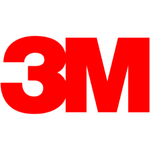Jet Engines Market Synopsis
Jet Engine Market Size Was Valued at USD 7620.53 Million in 2023 and is Projected to Reach USD 14367.55 Million by 2032, Growing at a CAGR of 7.3% From 2024-2032.
- A jet engine is a type of reaction engine, that discharges a fast-moving jet of heated gas (usually air) that produces thrust by jet propulsion. Jet engines are versatile power sources utilized in various fields beyond aviation. They propel aircraft, cruise missiles, and unmanned aerial vehicles, while also finding applications in rocketry for spaceflight and military purposes.
- Additionally, jet engines have powered high-speed cars, including drag racers, with Thrust SSC, a turbofan-powered car, currently holding the land speed record. Beyond transportation, jet engine designs are adapted for industrial use as gas turbines and marine power plants. These turbines generate significant power, up to 50,000 shaft horsepower, used in electricity generation, pumping operations, and marine propulsion.
- Derived from military turbojets like Pratt & Whitney's J57 and J75, industrial turbines also include adaptations of low-bypass turbofans such as the P&W JT8D, capable of producing 35,000 horsepower. Furthermore, jet engine technology extends to turboshaft and turboprop engines, sharing components and designs, and is commonly employed in helicopters and propeller-driven aircraft.
Jet Engines Market Trend Analysis
Digital Twin Technology
- Digital twin technology revolutionizes maintenance practices by creating virtual replicas of jet engines. By simulating the real-world performance and monitoring data in real time, digital twins enable predictive maintenance, identifying potential issues before they occur.
- This proactive approach minimizes downtime, optimizes maintenance schedules, and maximizes operational efficiency. Moreover, digital twins facilitate continuous improvement through data analysis, allowing for ongoing optimization of engine performance and reliability.
- Overall, the integration of digital twin technology revolutionizes maintenance practices, enhancing safety, reliability, and cost-effectiveness in the aviation industry.
Advanced Materials
- Advanced materials like carbon composites, ceramics, and high-temperature metal alloys are transforming jet engine design.
- Carbon composites offer exceptional strength-to-weight ratios, reducing overall engine weight and fuel consumption while maintaining structural integrity. Ceramics, known for their heat resistance, enable engines to operate at higher temperatures, enhancing efficiency and performance.
- Meanwhile, advanced metal alloys provide durability and withstand extreme conditions, improving engine reliability and longevity. These materials collectively enhance engine efficiency, reduce maintenance needs, and extend operational lifespans.
Opportunity
Surging Turbofan Engine Demand Offers Growth Opportunities
- The increasing demand for aircraft equipped with turbofan engines presents lucrative growth opportunities, particularly for airlines operating international routes requiring extended-range capabilities and non-stop operations.
- Turbofan engines allow for longer distances to be covered without frequent refueling, catering to the needs of airlines serving global markets. Moreover, stringent government regulations aimed at reducing noise pollution and addressing environmental concerns have spurred the development of turbofan engines with advanced noise reduction technology. These innovations not only enhance the customer experience but also align with sustainability goals.
- Additionally, ongoing technological advancements have resulted in the creation of cutting-edge products that offer enhanced efficiency and performance, further driving market growth. Overall, the surge in turbofan engine demand is driven by a combination of factors including extended range capabilities, noise reduction technology, and continuous technological innovation, positioning the market for significant expansion.
Jet Engines Market Segment Analysis:
Drone Flight Controller System Market is segmented based on type, application and end-users.
By Type, Turbofan Segment Is Expected To Dominate The Market During The Forecast Period
- Turbofan engines are expected to be the fastest-growing segment due to increasing demand for business jets in the Asia Pacific region. Similarly, the turboshaft segment is projected to experience significant growth driven by the expanding civil helicopter fleet, particularly in developing countries like India and China undergoing rapid urbanization and industrialization.
- Efforts to develop indigenous turbofan engines in the Asia Pacific region further support segment demand. Turbofan engines' properties such as ease of maintenance and better fuel efficiency have enabled them to cater to a wider market. Stringent noise regulations and environmental concerns have prompted innovations in engine design to reduce noise emissions, enhancing the flying experience for passengers and addressing airport noise pollution concerns. Manufacturers are investing in R&D to design turbofan engines with lower noise profiles while maintaining performance standards.
- The jet engine market holds substantial potential due to a surge in global air travel, aircraft modernization contracts in commercial and military sectors, infrastructure development in the aviation industry, and ongoing R&D efforts to improve fuel efficiency and reduce carbon footprint. The revival of the aviation industry post-pandemic has stimulated travel enthusiasm, contributing to the revitalization of the sector. Turbofan jet engines, crucial for aviation propulsion, are undergoing transformative trends, shaping their evolution in the aerospace sector. These factors collectively indicate a promising outlook for the jet engine market in the years to come.
By End-User, The Civil Aviation Segment Held The Largest Share in 2023
- The civil aviation segment retained its position as the largest contributor to the jet engine market. This was driven by a convergence of commercial demands, environmental requirements, and continuous technical advancements. Notably, there has been an ongoing pursuit for lower emissions and increased fuel efficiency, reflecting the industry's commitment to environmental sustainability.
- To enhance engine performance, manufacturers are heavily investing in cutting-edge cooling technology, aerodynamics, and the utilization of new materials. These investments are crucial for maximizing the efficiency and reliability of jet engines.
- Moreover, there is a growing emphasis on gas performance and ecological sustainability within the industry. This presents opportunities for manufacturers to develop and market turbofan engines with enhanced gas efficiency. Advancements in materials, aerodynamics, and propulsion technologies are contributing to the development of more environmentally friendly and cost-effective engines.
- Overall, the jet engine market is witnessing a significant shift towards greener and more efficient solutions, driven by both market demand and regulatory pressures. Continued innovation and collaboration within the industry are essential to meet these evolving demands while ensuring sustainable growth and development.
Expenditure heads for the Ministry of Civil Aviation (in Rs crore)
In 2022-23, out of the total allocation to the Ministry, the highest is towards AIAHL at Rs 9,260 crore (87%). This is followed by the allocation towards the Regional Connectivity Scheme (RCS) at Rs 601 crore (5.62%).
|
Major Head |
2020-21 Actual |
2021-22 RE |
2022-23 BE |
% change (2022-23 BE over 2021-22 RE) |
|
Establishment Expenditure |
353 |
389 |
435 |
12% |
|
RCS |
700 |
994 |
601 |
-40% |
|
AAI |
30 |
190 |
150 |
-21% |
|
Others |
822 |
196 |
57 |
-78% |
|
Subtotal |
1905 |
1769 |
1242 |
-30% |
|
Air India Related |
2184 |
70883 |
9425 |
-87% |
|
Total |
4089 |
72652 |
10667 |
-85% |
Source: Company database
Note: BE – Budget Estimate; RE – Revised Estimate; RCS – Regional Connectivity Scheme; AAI: Airports Authority of India.

Projections of passenger traffic in India (in million)
Jet Engines Market Regional Insights:
North America is Expected to Dominate the Market Over the Forecast Period
- The United States and several European countries are dominant in jet engine production. The United States is home to major jet engine manufacturers like General Electric (GE Aviation) and Pratt & Whitney.
- The United States has a long history of aerospace innovation and a robust aerospace industry. It has well-established companies with significant expertise in aircraft and engine manufacturing. The United States has one of the largest defense budgets globally, leading to substantial investments in military aircraft and jet engine technology. Military contracts drive innovation and provide revenue streams for jet engine manufacturers.
- In Europe, countries such as the United Kingdom (Rolls-Royce), France (Safran Aircraft Engines), and Germany (MTU Aero Engines) also have significant contributions to jet engine production. Additionally, countries like Russia (with companies like Klimov and Saturn) and China (with companies like AVIC and AECC) have been expanding their capabilities in jet engine manufacturing in recent years.
Jet Engines Market Top Key Players:
- General Electric Aviation (United States)
- Rolls-Royce Holdings plc (United Kingdom)
- Pratt & Whitney (United States)
- CFM International (United States/France)
- Honeywell Aerospace (United States)
- Safran Aircraft Engines (France)
- MTU Aero Engines AG (Germany)
- Avio Aero (Italy)
- IHI Corporation (Japan)
- Engine Alliance (United States)
- Mitsubishi Heavy Industries Aero Engines, Ltd. (Japan)
- United Technologies Aerospace Systems (United States)
- Aerojet Rocketdyne Holdings, Inc. (United States)
- Eurojet Turbo GmbH (Germany)
- Snecma (now part of Safran Aircraft Engines; France)
- Teledyne Continental Motors (United States)
- Williams International (United States)
- Zunum Aero (United States)
- Reaction Engines Limited (United Kingdom)
- Motor Sich (Ukraine)
- NPO Saturn (Russia)
- Ishikawajima-Harima Heavy Industries Co., Ltd. (IHI) (Japan)
- Hanwha Aerospace (South Korea)
- Embraer S.A. (Brazil)
- Klimov (Russia)
- Thales Group (France)
- Airfoil Technologies International (ATI) (Singapore)
- Bharat Heavy Electricals Limited (BHEL) (India)
- PowerJet (France/Russia)
- Hindustan Aeronautics Limited (HAL) (India) and key players
Key Industry Developments in the Jet Engines Market:
- In Jan 2024, India and France Discussed Ongoing Collaboration for Engine Manufacturing for AMCA Fighter Jets.
- In Jan 2024, Progress on India-US Fighter Jet Engine Technology Deal On Track, Says GE Aerospace President.
- In Mar 2024, The Ministry of Defence finalized five major capital acquisition contracts worth Rs 39,125 crore with domestic manufacturers as the financial year closes. Contracts include BrahMos missiles, fighter jet engines, and high-power radars. These deals aim to bolster indigenous capabilities, save foreign exchange, and reduce reliance on foreign equipment manufacturers.
|
Jet Engines Market |
|||
|
Base Year: |
2023 |
Forecast Period: |
2024-2032 |
|
Historical Data: |
2017 to 2023 |
Market Size in 2023: |
7620.53 Million |
|
Forecast Period 2024-32 CAGR: |
7.3% |
Market Size in 2032: |
14367.55 Million |
|
Segments Covered: |
By Type |
|
|
|
By Application |
|
||
|
By End-user |
|
||
|
Technological development and Digitalization |
|
||
|
Key Market Drivers: |
|
||
|
Key Market Restraints: |
|
||
|
Key Opportunities: |
|
||
|
Companies Covered in the report: |
General Electric Aviation (United States), Rolls-Royce Holdings plc (United Kingdom), Pratt & Whitney (United States), CFM International (United States/France), Honeywell Aerospace (United States) |
||
- INTRODUCTION
- RESEARCH OBJECTIVES
- RESEARCH METHODOLOGY
- RESEARCH PROCESS
- SCOPE AND COVERAGE
- Market Definition
- Key Questions Answered
- MARKET SEGMENTATION
- EXECUTIVE SUMMARY
- MARKET OVERVIEW
- GROWTH OPPORTUNITIES BY SEGMENT
- MARKET LANDSCAPE
- PORTER’S FIVE FORCES ANALYSIS
- Bargaining Power Of Supplier
- Threat Of New Entrants
- Threat Of Substitutes
- Competitive Rivalry
- Bargaining Power Among Buyers
- INDUSTRY VALUE CHAIN ANALYSIS
- MARKET DYNAMICS
- Drivers
- Restraints
- Opportunities
- Challenges
- MARKET TREND ANALYSIS
- REGULATORY LANDSCAPE
- PESTLE ANALYSIS
- PRICE TREND ANALYSIS
- PATENT ANALYSIS
- TECHNOLOGY EVALUATION
- MARKET IMPACT OF THE RUSSIA-UKRAINE WAR
- Geopolitical Market Disruptions
- Supply Chain Disruptions
- Instability in Emerging Markets
- ECOSYSTEM
- PORTER’S FIVE FORCES ANALYSIS
- JET ENGINE MARKET BY TYPE (2017-2032)
- JET ENGINE MARKET SNAPSHOT AND GROWTH ENGINE
- MARKET OVERVIEW
- SEGMENT TURBOFAN
- Introduction And Market Overview
- Historic And Forecasted Market Size in Value (2017-2032F)
- Historic And Forecasted Market Size in Volume (2017-2032F)
- Key Market Trends, Growth Factors And Opportunities
- Geographic Segmentation Analysis
- SEGMENT TURBOJET
- SEGMENT TURBOPROP
- SEGMENT PULSEJET
- SEGMENTSCRAMJET
- JET ENGINE MARKET BY APPLICATION (2017-2032)
- JET ENGINE MARKET SNAPSHOT AND GROWTH ENGINE
- MARKET OVERVIEW
- SEGMENT ROCKET
- Introduction And Market Overview
- Historic And Forecasted Market Size in Value (2017-2032F)
- Historic And Forecasted Market Size in Volume (2017-2032F)
- Key Market Trends, Growth Factors And Opportunities
- Geographic Segmentation Analysis
- SEGMENT WATERJET
- SEGMENT HYBRID PROPULSION
- JET ENGINE MARKET BY END-USER (2017-2032)
- JET ENGINE MARKET SNAPSHOT AND GROWTH ENGINE
- MARKET OVERVIEW
- SEGMENT MILITARY AVIATION
- Introduction And Market Overview
- Historic And Forecasted Market Size in Value (2017-2032F)
- Historic And Forecasted Market Size in Volume (2017-2032F)
- Key Market Trends, Growth Factors And Opportunities
- Geographic Segmentation Analysis
- SEGMENT CIVIL AVIATION
- COMPANY PROFILES AND COMPETITIVE ANALYSIS
- COMPETITIVE LANDSCAPE
- Competitive Benchmarking
- JET ENGINE Market Share By Manufacturer (2023)
- Industry BCG Matrix
- Heat Map Analysis
- Mergers & Acquisitions
- GENERAL ELECTRIC AVIATION (UNITED STATES)
- Company Overview
- Key Executives
- Company Snapshot
- Role of the Company in the Market
- Sustainability and Social Responsibility
- Operating Business Segments
- Product Portfolio
- Business Performance (Production Volume, Sales Volume, Sales Margin, Production Capacity, Capacity Utilization Rate)
- Key Strategic Moves And Recent Developments
- SWOT Analysis
- ROLLS-ROYCE HOLDINGS PLC (UNITED KINGDOM)
- PRATT & WHITNEY (UNITED STATES)
- CFM INTERNATIONAL (UNITED STATES/FRANCE)
- HONEYWELL AEROSPACE (UNITED STATES)
- SAFRAN AIRCRAFT ENGINES (FRANCE)
- MTU AERO ENGINES AG (GERMANY)
- AVIO AERO (ITALY)
- IHI CORPORATION (JAPAN)
- ENGINE ALLIANCE (UNITED STATES)
- MITSUBISHI HEAVY INDUSTRIES AERO ENGINES, LTD. (JAPAN)
- UNITED TECHNOLOGIES AEROSPACE SYSTEMS (UNITED STATES)
- AEROJET ROCKETDYNE HOLDINGS, INC. (UNITED STATES)
- EUROJET TURBO GMBH (GERMANY)
- SNECMA (NOW PART OF SAFRAN AIRCRAFT ENGINES; FRANCE)
- TELEDYNE CONTINENTAL MOTORS (UNITED STATES)
- WILLIAMS INTERNATIONAL (UNITED STATES)
- ZUNUM AERO (UNITED STATES)
- REACTION ENGINES LIMITED (UNITED KINGDOM)
- MOTOR SICH (UKRAINE)
- NPO SATURN (RUSSIA)
- ISHIKAWAJIMA-HARIMA HEAVY INDUSTRIES CO., LTD. (IHI) (JAPAN)
- HANWHA AEROSPACE (SOUTH KOREA)
- EMBRAER S.A. (BRAZIL)
- KLIMOV (RUSSIA)
- THALES GROUP (FRANCE)
- AIRFOIL TECHNOLOGIES INTERNATIONAL (ATI) (SINGAPORE)
- BHARAT HEAVY ELECTRICALS LIMITED (BHEL) (INDIA)
- POWERJET (FRANCE/RUSSIA)
- HINDUSTAN AERONAUTICS LIMITED (HAL) (INDIA)
- COMPETITIVE LANDSCAPE
- GLOBAL JET ENGINE MARKET BY REGION
- OVERVIEW
- NORTH AMERICA
- Key Market Trends, Growth Factors And Opportunities
- Key Manufacturers
- Historic And Forecasted Market Size By Type
- Historic And Forecasted Market Size By Application
- Historic And Forecasted Market Size By End-user
- Historic And Forecasted Market Size By Country
- USA
- Canada
- Mexico
- EASTERN EUROPE
- Key Market Trends, Growth Factors And Opportunities
- Key Manufacturers
- Historic And Forecasted Market Size By Segments
- Historic And Forecasted Market Size By Country
- Russia
- Bulgaria
- The Czech Republic
- Hungary
- Poland
- Romania
- Rest Of Eastern Europe
- WESTERN EUROPE
- Key Market Trends, Growth Factors And Opportunities
- Key Manufacturers
- Historic And Forecasted Market Size By Segments
- Historic And Forecasted Market Size By Country
- Germany
- United Kingdom
- France
- The Netherlands
- Italy
- Spain
- Rest Of Western Europe
- ASIA PACIFIC
- Key Market Trends, Growth Factors And Opportunities
- Key Manufacturers
- Historic And Forecasted Market Size By Segments
- Historic And Forecasted Market Size By Country
- China
- India
- Japan
- South Korea
- Malaysia
- Thailand
- Vietnam
- The Philippines
- Australia
- New-Zealand
- Rest Of APAC
- MIDDLE EAST & AFRICA
- Key Market Trends, Growth Factors And Opportunities
- Key Manufacturers
- Historic And Forecasted Market Size By Segments
- Historic And Forecasted Market Size By Country
- Turkey
- Bahrain
- Kuwait
- Saudi Arabia
- Qatar
- UAE
- Israel
- South Africa
- SOUTH AMERICA
- Key Market Trends, Growth Factors And Opportunities
- Key Manufacturers
- Historic And Forecasted Market Size By Segments
- Historic And Forecasted Market Size By Country
- Brazil
- Argentina
- Rest of South America
- INVESTMENT ANALYSIS
- ANALYST VIEWPOINT AND CONCLUSION
- Recommendations and Concluding Analysis
- Potential Market Strategies
|
Jet Engines Market |
|||
|
Base Year: |
2023 |
Forecast Period: |
2024-2032 |
|
Historical Data: |
2017 to 2023 |
Market Size in 2023: |
7620.53 Million |
|
Forecast Period 2024-32 CAGR: |
7.3% |
Market Size in 2032: |
14367.55 Million |
|
Segments Covered: |
By Type |
|
|
|
By Application |
|
||
|
By End-user |
|
||
|
Technological development and Digitalization |
|
||
|
Key Market Drivers: |
|
||
|
Key Market Restraints: |
|
||
|
Key Opportunities: |
|
||
|
Companies Covered in the report: |
General Electric Aviation (United States), Rolls-Royce Holdings plc (United Kingdom), Pratt & Whitney (United States), CFM International (United States/France), Honeywell Aerospace (United States) |
||
Frequently Asked Questions :
The forecast period in the Jet Engines Market research report is 2023-2032.
General Electric Aviation (United States), Rolls-Royce Holdings plc (United Kingdom), Pratt & Whitney (United States), CFM International (United States/France), Honeywell Aerospace (United States), Safran Aircraft Engines (France), MTU Aero Engines AG (Germany), Avio Aero (Italy), IHI Corporation (Japan), Engine Alliance (United States), Mitsubishi Heavy Industries Aero Engines, Ltd. (Japan), United Technologies Aerospace Systems (United States), Aerojet Rocketdyne Holdings, Inc. (United States), Eurojet Turbo GmbH (Germany), Snecma (now part of Safran Aircraft Engines; France), Teledyne Continental Motors (United States), Williams International (United States), Zunum Aero (United States), Reaction Engines Limited (United Kingdom), Motor Sich (Ukraine), NPO Saturn (Russia), Ishikawajima-Harima Heavy Industries Co., Ltd. (IHI) (Japan), Hanwha Aerospace (South Korea), Embraer S.A. (Brazil), Klimov (Russia), Thales Group (France), Airfoil Technologies International (ATI) (Singapore), Bharat Heavy Electricals Limited (BHEL) (India), PowerJet (France/Russia), Hindustan Aeronautics Limited (HAL) (India) and key players.
The Jet Engines Market is segmented into Type, application, End-user, and region. By Type, the market is categorized into Turbofan, Turbojet, Turboprop, Pulsejet, and Scramjet. By End-user, the market is categorized into Military Aviation and Civil Aviation. By Application, the market is categorized into Rocket, Water Jet, and Hybrid Propulsion. By region, it is analyzed across North America (U.S.; Canada; Mexico), Eastern Europe (Bulgaria; The Czech Republic; Hungary; Poland; Romania; Rest of Eastern Europe), Western Europe (Germany; UK; France; Netherlands; Italy; Russia; Spain; Rest of Western Europe), Asia-Pacific (China; India; Japan; Southeast Asia, etc.), South America (Brazil; Argentina, etc.), Middle East & Africa (Saudi Arabia; South Africa, etc.).
A jet engine is a type of reaction engine, that discharges a fast-moving jet of heated gas (usually air) that produces thrust by jet propulsion. Jet engines are versatile power sources utilized in various fields beyond aviation. They propel aircraft, cruise missiles, and unmanned aerial vehicles, while also finding applications in rocketry for spaceflight and military purposes
Jet Engine Market Size Was Valued at USD 7620.53 Million in 2023 and is Projected to Reach USD 14367.55 Million by 2032, Growing at a CAGR of 7.3% From 2024-2032.



































